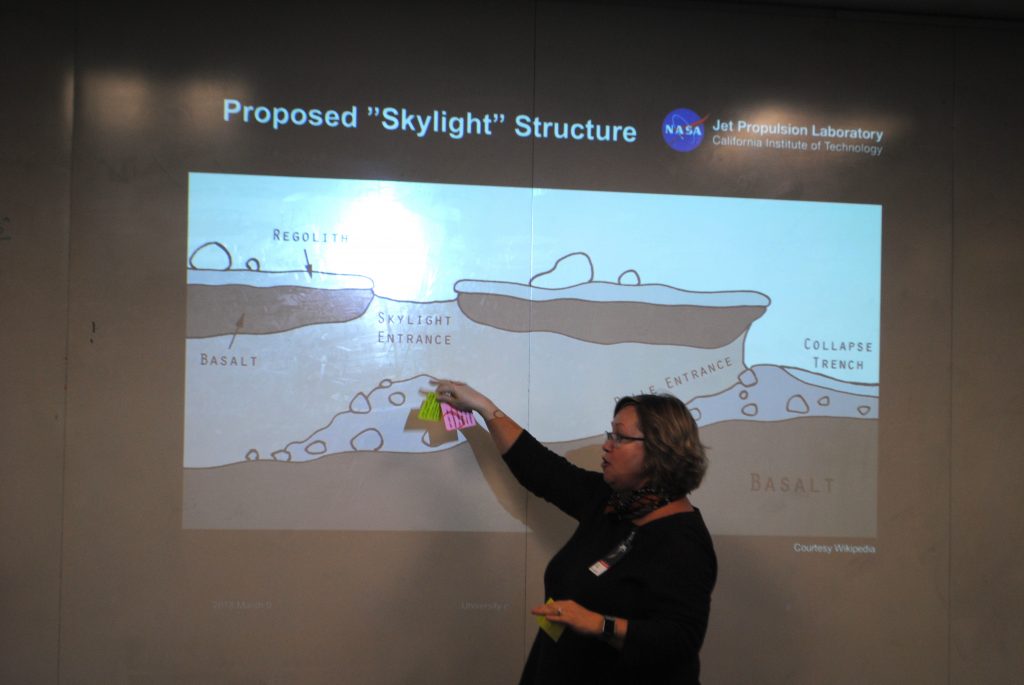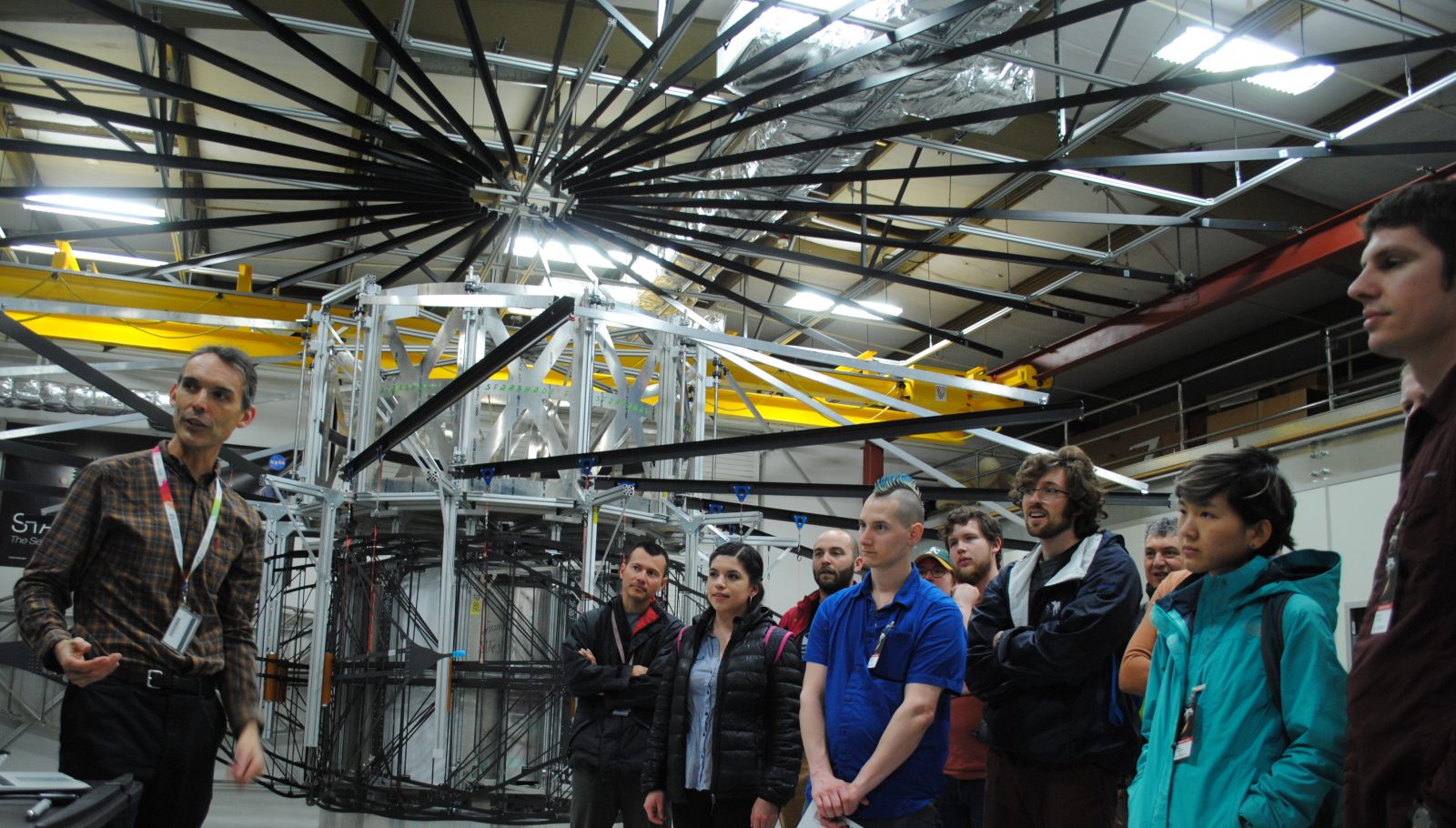Our 2017 workshop (held in winter quarter 2018) took us to Pasadena California to visit NASA’s Jet Propulsion Laboratory. During this workshop students learned about the astrobiology-relevant science, and state-of-the-art technology needed for JPL’s robotic exploration of the solar system and observations of exoplanets, and got to talk to scientists from a range of backgrounds about their jobs and work at JPL. During this trip students toured labs and mission command centers, and participated in a special “A Team”-guided brainstorming session to design a mission to Mars. Students obtained professional development advice about the career paths that JPL scientists took from graduation to where they are now. Fun fact: Most of them didn’t take a straight line like they expected, or even stay in the field of their dissertation!
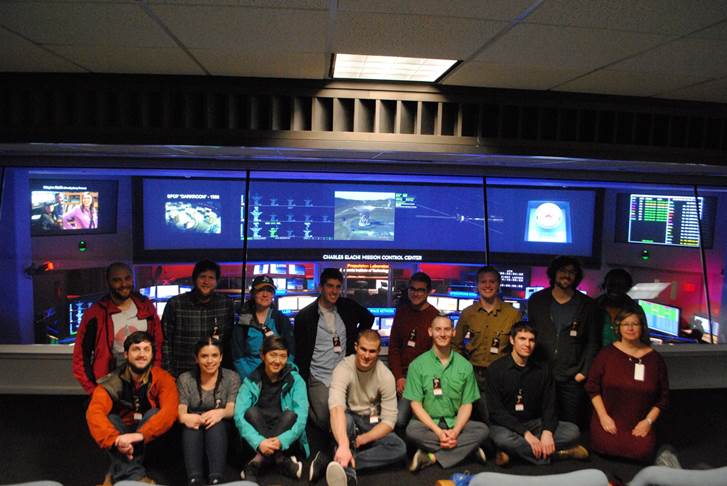
UW AB students toured the JPL starshade lab with Deputy Program Chief Technologist of the NASA Exoplanet Exploration Program, Brendan Crill. A starshade is a spacecraft concept that would fly in front of a telescope to block the light of distant stars to reveal exoplanetary systems otherwise hidden beneath the intense glare of their parent stars. A demonstration starshade can be seen pictured behind the students rolled into a cylinder and capable of fitting inside a rocket fairing (image at top of page).
You can watch an animation of what this will look like when launched into space here: https://www.jpl.nasa.gov/video/details.php?id=1284
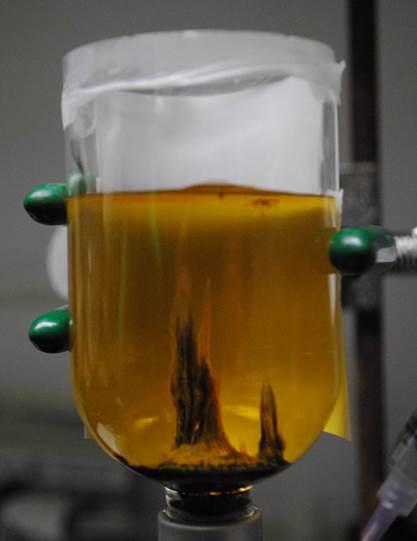
Ever wondered what hydrothermal systems on the ocean floor might have looked like back in the Archean geological eon? JPL scientists in the Astrobiology Lab seek to answer that question by growing their own mini hydrothermal vent systems by injecting simulated vent fluids into simulated Archean oceans.
Not only did the UWAB students get to see and learn about growing simulated hydrothermal vents, they got to experience it for themselves by creating their own!

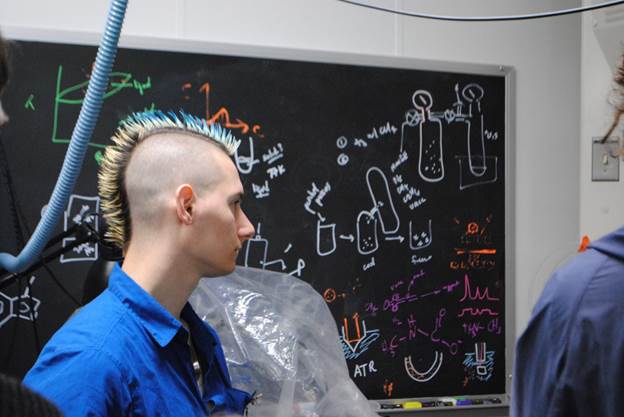

Another exciting part of the JPL visit was the opportunity to see the descent stage for the upcoming Mars 2020 rover mission. In addition to overlooking the lab the students got ask questions and hear a great overview of the mission and its science from the projects Deputy Project Scientist and UWAB Alumni Ken Williford.

